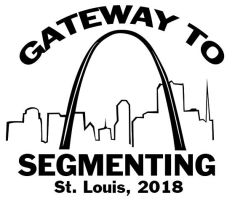
Segmented Woodturners is pleased to announce this roster of demonstrators for the 2018 symposium. Our intention for selecting these demonstrators was to cover as many topics as possible, to provide buy valium overnight delivery topics that have not been covered before, and to have demonstrations that would cover skill levels from beginner to advanced.
OCT 12-14, 2018
Demonstrators
 Bob Behnke
Bob Behnke
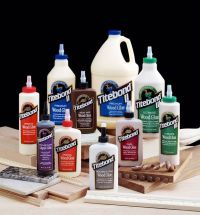
Bob is Franklin International’s Technical Service Manager for the Construction Division handling all technical aspects of the Titebond Branded product line of wood glues, construction adhesives, wood flooring adhesives and sealants. At Franklin Bob manages a group tasked with handling all calls to the company’s 800 number along with technicians tasked with testing of competitive products and new substrates. Bob has worked for over 30 years in the adhesives and sealants industry with experience in the development of emulsion polymers, scale up from bench to production of a range of adhesive technologies and development of breathable technology for organic and inorganic fabrics.
Rotation:
Glue Technology
My presentation will cover the 5 steps for successful wood gluing. From dry assembly to waiting for the glue to dry. Wood glues can affect the wood as it is being assembled and being prepared in advance will eliminate costly joint failures and frustrating disassembly. Discussion will focus on the steps needed to use wood glues with ease, what to watch out for when the glue hits the wood and why failures occur. We will also cover some frequently asked questions and why there are so many different wood glues. Bring your gluing questions as this is a discussion not just a presentation.
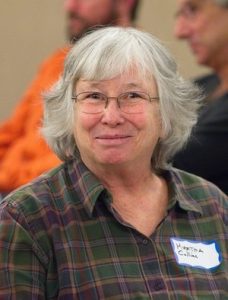 Martha Collins
Martha Collins
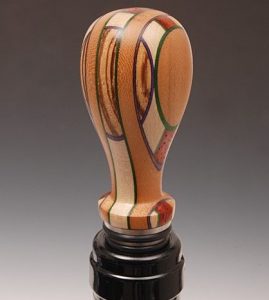
Leaving graduate school in the early 1970's, I envied friends who had a cabinet shop. It resonated deep with me, that at the end of the day there was something made that did not exist before. After a short internship as a carpenters apprentice I was able to be trained by the State of Michigan as a cabinetmaker. Title 9 had just gone through and I was the first woman in this program. It was wonderful ! Two and half years of instruction, everyday from 8 to 3. Upon graduation I was hired by the John Widdicomb Furniture company of Grand Rapids as a management trainee in their sample room.
In 1978 I opened my own shop in Kalamazoo, producing cabinets and custom furniture. At the same time I was apprenticing in a shop where wood jewelry was made. It was here that I learned about exotic woods and how to dye maple veneer.
Having attended the University of Oregon, I knew I wanted to live in the Northwest, so in 1983 my family moved to Sequim to a house and shop that I designed and built. Here along with cabinets and furniture I produced a line of bracelets that I offered through galleries along the West coast. In 1995 I was able to work for Admiral Marine in Port Townsend building the interiors of yachts. It was challenging good work and I loved it.
Since 2000 I have been back in my own shop, producing a full line of jewelry, bowls and tableware. I show my work at the finest craft shows around the country. I offer classes in my own studio and teach at the Port Townsend School of Woodworking, Pratt Art Center in Seattle and BARN on Bainbrige Island and have given many presentations to different chapters of the American Association of Woodturners.
Rotations:
The Joys of Lamination
This rotation will cover process for miniature laminations including material selection, glue up procedures, and then the slicing of the primary block to make secondary blocks that can be turned for bowls, bottle stoppers or whatever is desired. This presentation will cover everything from earrings to bowls.
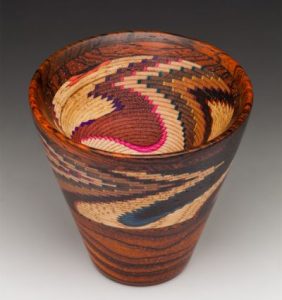
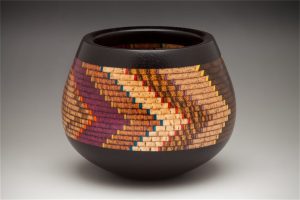
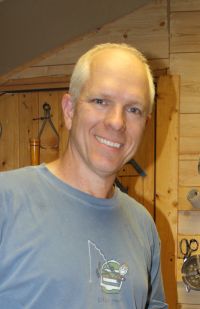 Robin Costelle
Robin Costelle
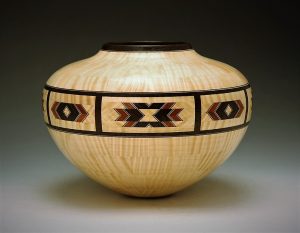
Robin Costelle has been a hobby woodturner since 2003. He has run the gamut from pens and bowls to large complex segmented vessels and beautiful hollow forms. He has also dabbled in pottery and musical instrument making, as well as furniture. He has been teaching and demonstrating for several years in and around his home state. Robin lives on a small farm outside Fern Creek, Kentucky with his wife and three children and is a member of the Louisville Area Woodturners.
Rotations:
Segmented Feature Rings
I will be showing how I design and create some easy feature ring segments. With a little imagination you can take these simple steps further to create your own special patterns. I will show how I come up with sizes necessary for a feature ring and thoughts on color schemes and complimentary design placement in a vessel.
Thoughts on Segmented turning.
I’ll be going over different aspects of my thought process for creating vessels using the standard stacked ring method of segmented vessel-most importantly form, but I’ll cover woods, patterns, different construction topics, and elements I think are important to a well conceived vessel. I will also show my tools and techniques for turning and finishing segmented vessels.
A different approach to open segmenting
In this rotation I will describe some easy ‘open’ segment feature ring designs made from laminated boards.
A Little Turning
In this session I will show my process for turning a couple of easy Christmas ornaments without using any math. Time permitting we’ll go over some other aspects of segmented vessel and bowl design. I will be explaining my tools and techniques for turning as I go.
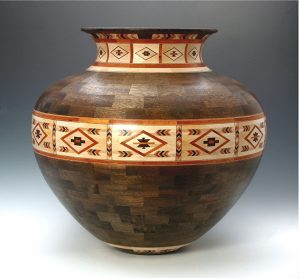
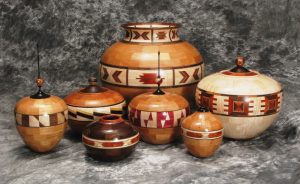
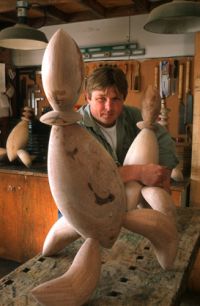 Michael Hosaluk
Michael Hosaluk

My love of woodworking is not only for the beauty and mystery of the material, but in the inventing of new techniques and processes to create objects. The materials I use relate to the objects I make. At times a piece of salvaged wood will become a starting point of design. Other times, a design will call for a piece of wood with incredible grain. Using plain wood like birch allows me to approach the objects as a three dimensional canvas. Here, I can apply a variety of surface design techniques to express an idea. My work tells stories from my life, places I've been. people I've met, architecture, our environment. These stories are interwoven into the objects I create. Craft goes beyond the pleasure of our senses and deals not only with aesthetics, but social and ideological lives.
Michael Hosaluk is recognized internationally and in Canada as one of the world's most creative wood "turners". Born in 1954, in Invernay, Saskatchewan, Hosaluk is self-taught. Hosaluk's work covers a wide range of objects and materials including functional vessels, furniture and sculptural pieces. His work is humorous and elegant, possesses character and gesture and is full of reference to architecture, nature and culture. Hosaluk's work has been exhibited throughout Canada, in Europe, China, Japan, Australia and the United States.
Rotations:
Segmented Box- turned, cut, reassembled
Turned box then cut, reassembled. Demonstration on turning a box then cutting and reassembling to create unique shapes in turning. Use of hook tools to turn deep end grain.
Turning Thin
Turning wet wood to translucency using cutting tools and scrapers. This demo pushes the limits of material tool usage. Fun session and always a challenge for me.
Faux Segmenting
This rotation with investigate other methods to achieve the appearance of segmented turning.

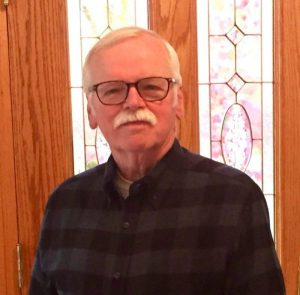 Lloyd Johnson
Lloyd Johnson
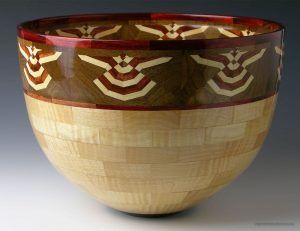
In 2001, Lloyd started a hobby business named Woodturner PRO to provide software for segmented woodturners. Through the years, there have been three software titles - 3D Design PRO, Woodturner PRO and Lamination PRO. In 2017, Lloyd took what he had learned from the past 16 years to write a new piece of design software named Segment PRO. The intent of this 3D software was to create a powerful program with a simple user interface where the software specifically targeted to new segmenters.
Rotations:
Intro to Multi Generation Lamination
This rotation will explore the multitude of design possibilities available through multi-generation lamination technology. Through examples and handouts, I'll show how to make chevrons, diamonds and Southwest-style feature ring designs. We'll discuss tips and tricks for the design, cutting and assembly processes and discuss the jigs I use to achieve the accuracy that is absolutely necessary to create a flawless segment.
Advanced Multi Generation Lamination
With the skills we learned to make 1st generation designs and repeat that process one or more times to make some amazing multi-generation designs for both woodturning and woodworking. In addition to bowl bottoms, 'dizzy bowl' designs, clock faces and complex feature rings, we’ll design flatwork such as guitar bodies, hall tables and headboards. The rotation will discuss advanced cutting and assembly techniques and ways to shorten the time required to create complex designs.
Beginning SketchUp
SketchUp is a free 3D drafting tool that has been in use for nearly 20 years. This rotation is for complete beginners and I intend to teach you enough basics to get you over the proverbial 'software hump’. We'll learn about the toolsets and navigating a 3D space. At the end of the rotation, you should see the immense possibilities for use in flatwork and woodturning and why you should never start any wood-related project without first modeling it in SketchUp. Feel free to bring a laptop with the free SketchUp already installed.
Integrating SketchUp with Woodturning Software
With beginner skills learned, we’ll learn to take segmented woodturning to a higher level. For example, segmented sculptures including ribbons, orderly tangles, mobius sculptures, off center, inside-out, etc., are just some of the design opportunities that lend themselves to SketchUp.
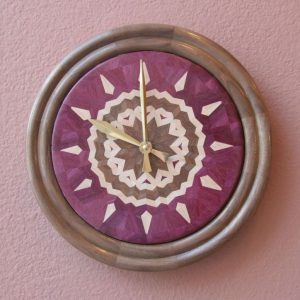
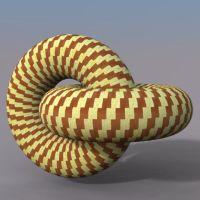
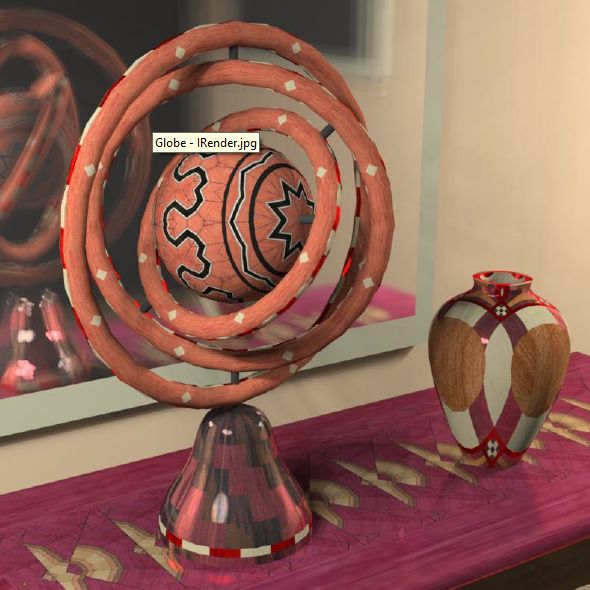
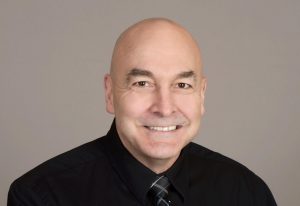 Tom Lohman
Tom Lohman
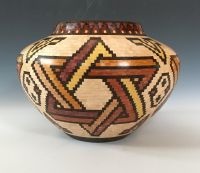
Tom has been woodworking for more than half of his life. He began segmented woodturning in 2010 and his passion is creating new designs and techniques that push the traditional boundaries. Tom particularly enjoys sharing what he has learned with others. He lives in northern Minnesota with his wife and retired from his position as an electrical engineer in 2016 which allows him more time to work on segmented woodturning projects.
Rotations:
Bowl from a Board - Beyond Basics
In this demonstration Tom will explore design options to create complex patterns using the Bowl from a Board technique. A short video of a selected bowl covering the complete process of design, construction and finishing will be shown. A presentation will follow detailing several boards that were created along with the finished product.
Design and Build Techniques for Open Segmented Woodturning
This demonstration will focus on design and build techniques that will allow you to go beyond simple patterns. There will be a short video detailing the design and construction of a selected project. Tom will also present tips on how to build a closed segmented project using an open segmented jig.
Wedgie Sled- From Basics to fascinating
This presentation is a must see for all segmented woodturners who want an easy way to make segments that are accurate every time. Tom will demonstrate how easy it is to make and use the “wedgie” sled that was designed by Jerry Bennett. This method does not require making half rings or using a disc sander saving you time and money. We will also explore tips and tricks using this method to make decorative center pieces, rings with compound cuts, and zig-zag segments.
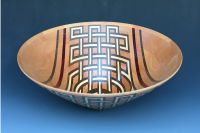
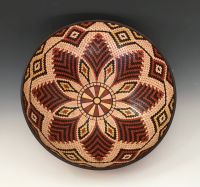
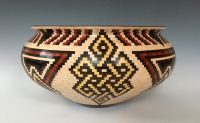
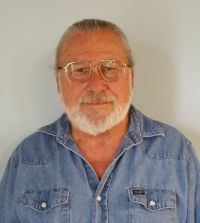 Pete Marken
Pete Marken
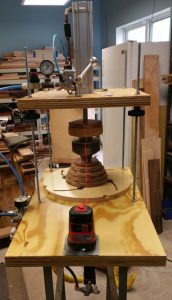
Originally from Brooklyn NY, currently living in Calera Alabama about 25 miles south of Birmingham. Retired from the automotive manufacturing industry. I have been a wood turner for over 25 years and became a segmented enthusiast about ten years ago. This includes standard segmented pieces as well as open segmenting and twister style pieces. My current workload consists of a 50/50 split of traditional turnings and segmented.
I am particularly proud of the finish on my pieces and spend the extra time and effort to achieve a high gloss finish. I am currently branching out to teaching both styles of turning. I find it invigorating sharing the joy of turning wood.
Rotations:
Fixture for accurately centering and stacking segmented rings.
I will be demonstrating rounding the corners of a glued up ring using disk fixtures on the inside to center the ring on an auxiliary faceplate. By turning round on the outside and inside this allows more precise ring alignment during the stacking process. I will demonstrate the use of my centering device and laser for precise brick lay alignment of glue lines. This fixture will also make stacking and centering of vortex layer alignment a snap. Time permitting will also demo my scroll saw circle cutting jig for cutting vortex rings.
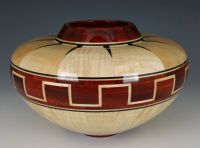
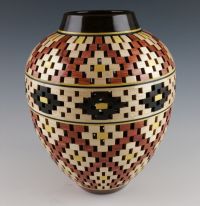
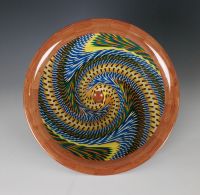
 Al Miotke
Al Miotke
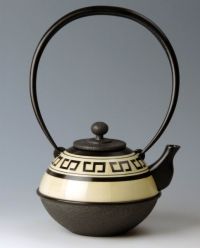
Al spent most of his life doing flatwork until he discovered segmented woodturning in 2006 and a new passion quickly emerged. After designing classical segmented designs for a number of years, Al began exploring the many possibilities for creating unique designs. Incorporating carving, texturing, and coloring into his designs to add organic elements has become a signature approach.
Rotations:
Bowl from a board – From simple to complex
The bowl from a board technique has been around a long time and can be a very simple and cost effective way to make a bowl. This simple concept can then be expanded in many directions to create fascinating works of art. This rotation will cover the basics of the technique then survey some of the many approaches to add complexity and interest to the design.
Embellishment for Segmented Designs
Learn how to effectively incorporate different types of embellishment techniques into a segmented design. Various texturing approaches will be covered along with coloring using a variety of media including acrylics, dyes, bleaching, metallic paints and more. Design approaches so the embellishment does not clash with the segmenting will also be discussed
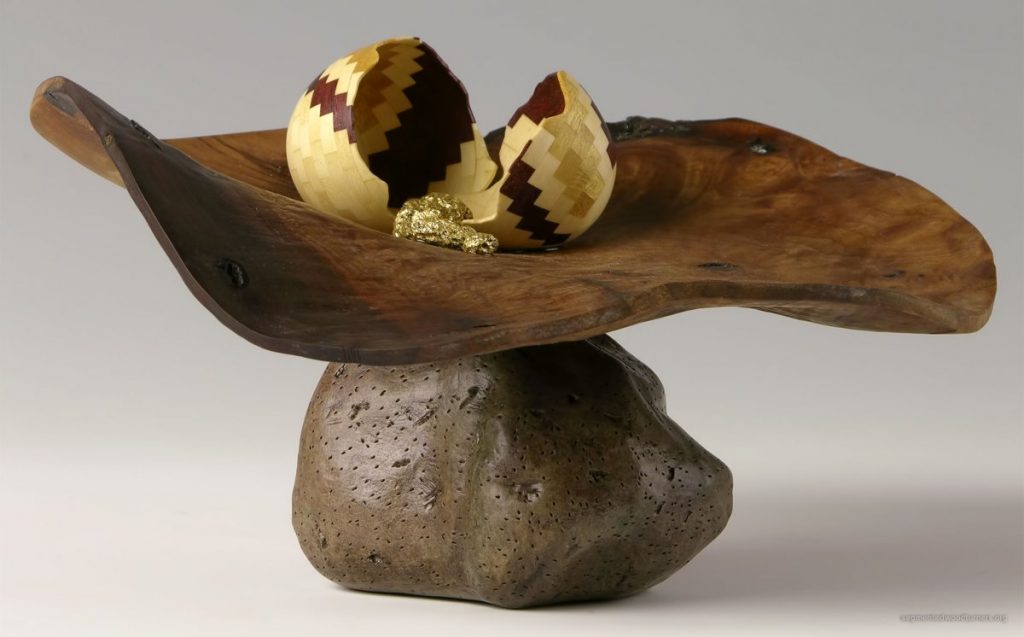
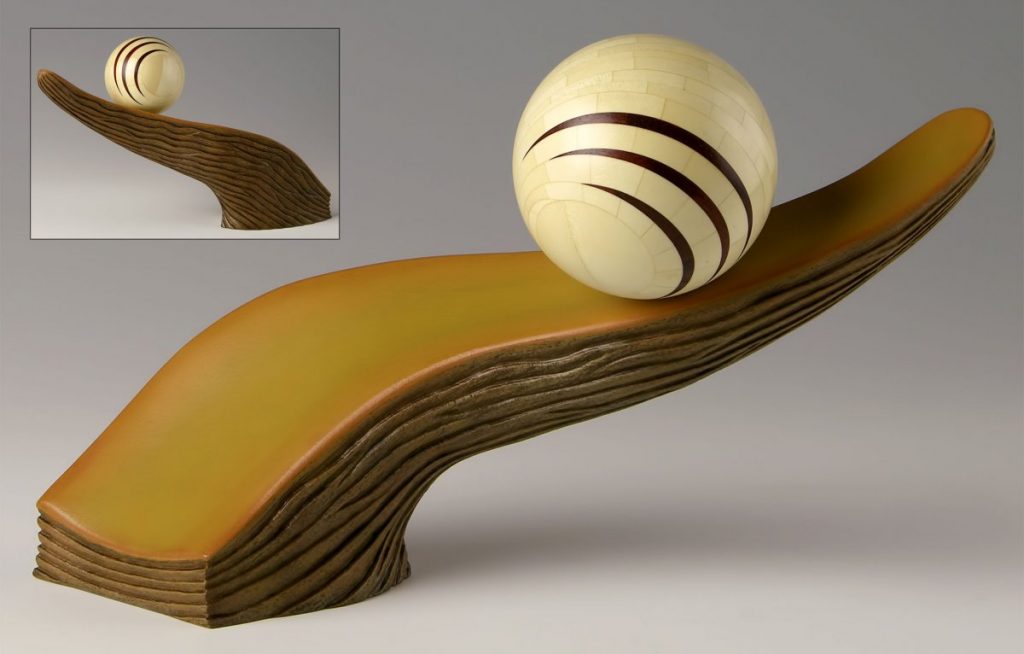
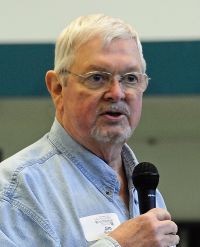 Jim Rodgers
Jim Rodgers

Jim is the Director of the Diablo Woodturning Center, where he teaches wood turning, and construction skills classes. From his 15 years of teaching experience, he has published two books on wood turning and segmented wood turning. Jim also teaches on-line classes in segmentation through Craftsy.com where he has over 3,000 registered students..
Rotations:
The basics of segmented wood turning - All the facts and processes you need to know to get started.
During this session I will explain how to plan, prepare, and construct a ring-segmented vessel including designing, layout, cutting and constructing the project in the simplest ways.
Open segment construction – 3 ½ different ways.
While open segment construction is not complicated, it requires special fixtures. There are different ways to choose between – each with advantages and limits. I will show and describe the fixtures and processes for each way.
Tool making for the woodturner
This presentation will show and discuss three levels of tool making that we segmenters can appreciate. Simple tool modifications to improve their usability, new tools created from existing materials with a minimum of skill, and using tool steel to create new tools including the proper heat treating needed.
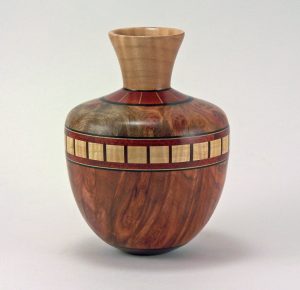
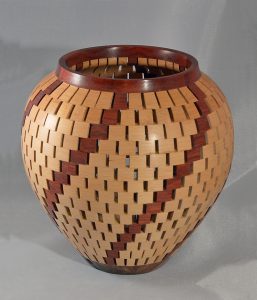
 Curt Theobald
Curt Theobald
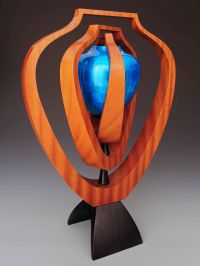
My desire for less concrete and more creative woodwork landed me in a production cabinet shop. I soon became shop foreman. While working at the cabinet shop I noticed an old Shopsmith lathe sitting in the corner. This as the very same vintage machine that my dad owned and let me use to turn wood during my high school years. I purchased it, which began my addiction to woodturning. Through a magazine article I discovered segmented turning. All I could think about was gluing wood together and turning on the Shopsmith. This passion consumed my every spare moment.
My current body of work utilizes the passion for assembly I learned at an early age. The technical challenges I create for myself in working from vision to object provide great satisfaction. My goal is to speak to the viewer of my work through the intricacies of the wood grain. The emotion the wood can convey through the use of the grain of the material as it works in harmony with the shape of the forms is compelling. It invites the viewer along on a journey – a journey of a deeper, more contemplative experience.
Rotations:
The Art and Evolution of Segmented Woodturning
In this presentation I will review the history of segmented woodturning and what impact the past segmented turners have had and continue to have on contemporary segmented work. Attendees will be introduced to the historical forerunners of segmented work, some of whom may be unfamiliar to turners today. We will look at their contribution to the field along with discussion of where segmented woodturning may be going in the future.
Thinking Outside the Box
Sometimes it can be difficult to make segmented turnings that stand out from other segmented works. This session, which is beneficial to both segmented and non-segmented turners, will challenge attendees to think differently about the creation of their work. We will take a step-by- step look at a sculptural piece I created and discuss the steps I pursued to make my vision a reality. Some of the topics presented will be inspiration, evolution of design, problem solving, prototyping, and creation of the piece.
Segmented Bowl Construction
Don’t let the apparent complexity of a segmented pattern intimidate you. By participating in this presentation and watching the methods conveyed, attendees will learn how to accurately plan their own projects and begin to foresee any potential problems before any wood is cut. I will show how to create patterns that can be used to enhance segmented woodturnings. Many methods will be shared to help attendees more easily and accurately perform segmented pattern glue-ups in their own workshop, in addition to learning multiple time-saving techniques.
Segmenting Stone
In this presentation we will discuss the techniques necessary to successfully glue and turn stone. There is an endless variety of stone that can be used to create interesting segmented turnings. We will discuss techniques necessary to work with Alabaster, Soapstone, Pyrophyllite, and Calcite. Come to this session to learn where to begin.
Chasing the Form
There are far too many unsuccessful forms in segmented woodturning today. Attendees will learn what components create a good form. We will discuss and hopefully better understand how a small change when the vessel is still attached to the faceplate will make the work go from good to great. Chasing the form is a never ending endeavor.

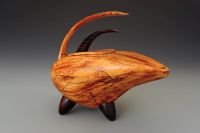
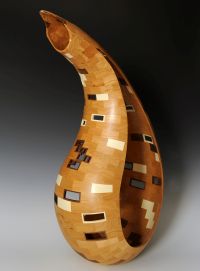
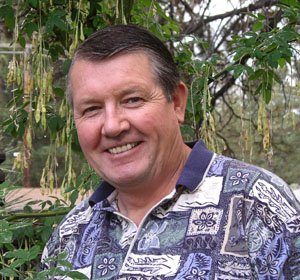 Malcolm Tibbetts
Malcolm Tibbetts
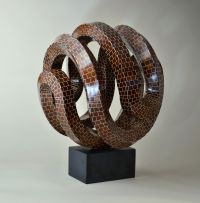
Malcolm has become one of the premier segmenters worldwide. By stretching his imagination, he has created an amazing variety of designs and art pieces.
Rotations:
Ribbons (presented 2 times)
Everything you need to know about the process from design to finish. This will include a discussion of compound miters.
Tubes and Triangles (presented 2 times)
This will cover the process of treating a ring as if it were a segment so that curved hollow tubes can be constructed and turned. The use of tubes in the creation of tangles will be revealed.
Lamination Trickery
The use of laminated material as opposed to segmented rings will be discussed. Feature rings, checkered hollow forms, and "dizzy bowls" will be discussed.
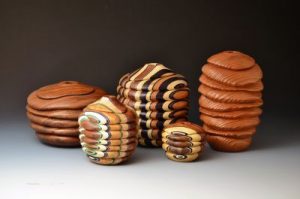
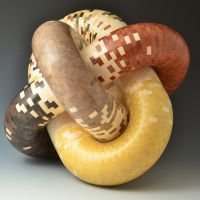

 Bob Behnke
Bob Behnke 
 Martha Collins
Martha Collins 


 Robin Costelle
Robin Costelle 


 Michael Hosaluk
Michael Hosaluk 

 Lloyd Johnson
Lloyd Johnson 



 Tom Lohman
Tom Lohman 



 Pete Marken
Pete Marken 



 Al Miotke
Al Miotke 


 Jim Rodgers
Jim Rodgers


 Curt Theobald
Curt Theobald 



 Malcolm Tibbetts
Malcolm Tibbetts 

